When Can Puppies Regulate Their Body Temperature?
Watching natural instinct kick in as your beloved dog cares for her puppies is heartwarming. But, if you’re like me, you want to do your due diligence to ensure she and her puppies have the ideal conditions to thrive.
So, as you watch the puppies cuddle up close to their mother’s body, it might get you wondering—when can puppies regulate their body temperature?
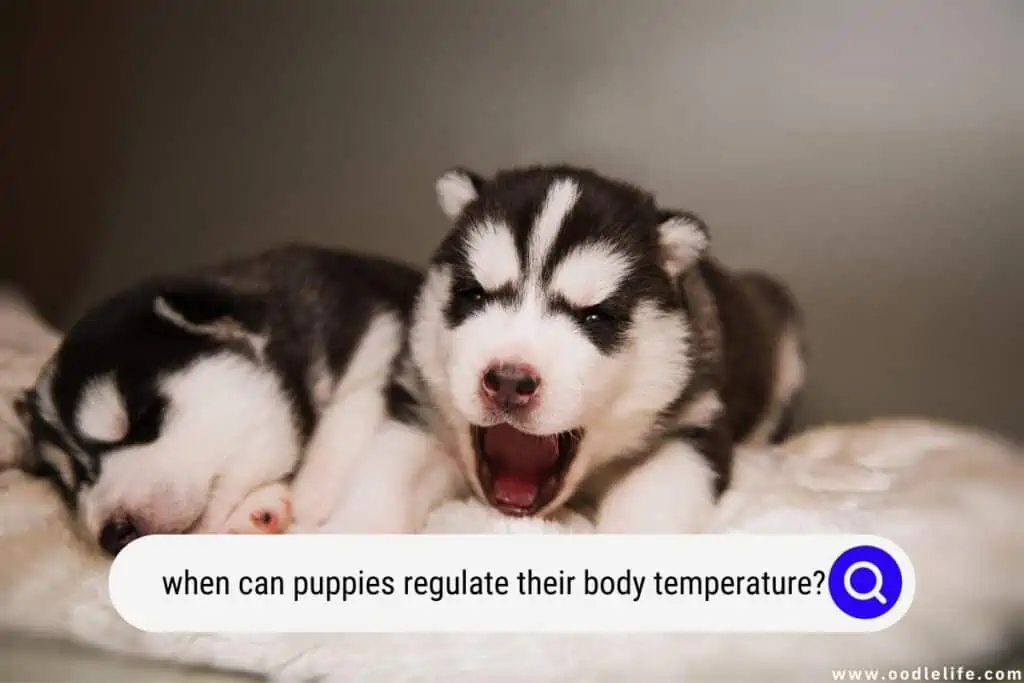
Puppies can regulate their body temperature by around seven weeks old. They reach their adult temperature a few weeks before this, but they’re often still dependent on their mom until the seven-week mark.
Puppy vs. Adult Average Temperature
Newborn puppies have a body temperature significantly below an adult dog’s temperature. Luckily, their temperature rapidly increases as they age, with the average temperatures being as follows:
- Newborn to 1 week old: 95° – 99°F
- 2 – 3 weeks old: 97° – 100°F
- 4 weeks old: 100° – 102°F
Once your puppy reaches four weeks old, it’ll have the same body temperature as an adult dog.
Just because your puppy reaches a full-grown dog’s body temperature doesn’t necessarily mean they can self-regulate. So, they usually still rely on the warmth of their mother until they reach around seven weeks old.
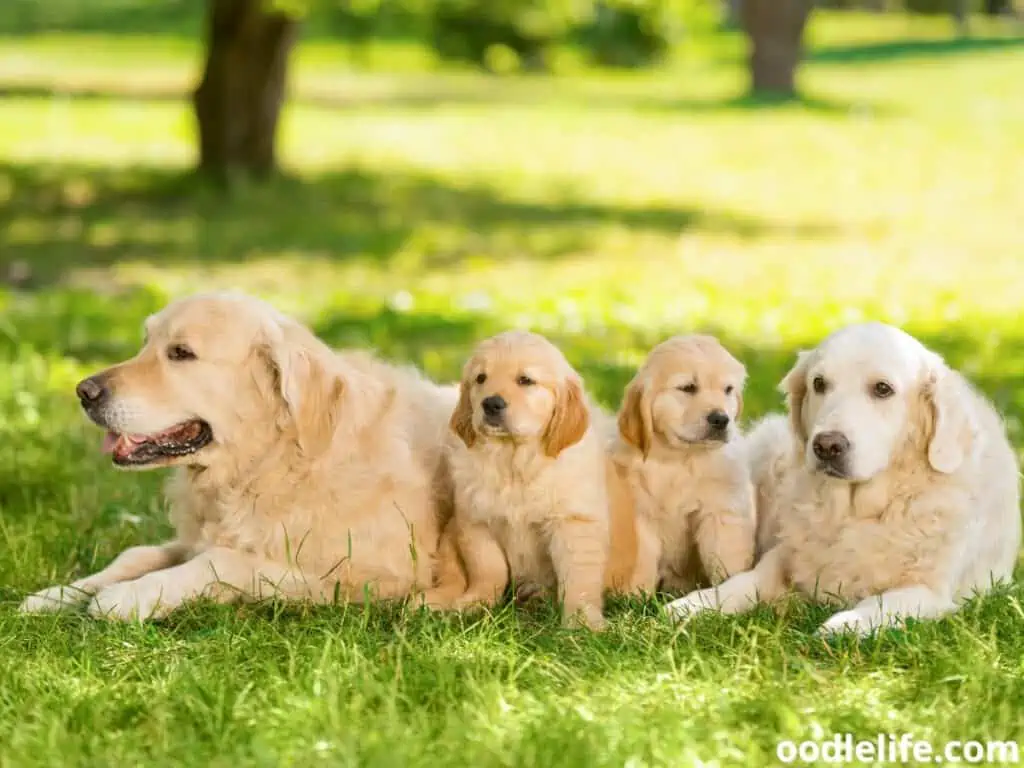
Signs Your Puppy Can Regulate Their Body Temperature
Now that you know the answer to “When can puppies regulate their body temperature?” you likely want to know how to tell when they’ve passed the body temperature regulation milestone.
I know how unpleasant it is to take a puppy’s rectal temperature. While that’s among the most accurate ways to determine temperature regulation, it’s not the only way. So, below are some indications that your puppies have control over their body temperature regulation:
- Sleeping away from their mom
- Staying clear of heaters
- Wandering around by themselves without shivering
The important thing to remember is that getting too cold is usually the biggest issue with puppies not being able to regulate their body temperature.
As long as you’re keeping the space where they live at a comfortable room temperature, judging how they react to that temperature is an excellent indication of whether they’ve developed the ability to regulate their body temperature.
That said, in an ideal situation, newborn puppies prefer a temperature around 85°F. Their preferred temperature then drops to 75° – 80°F once they turn one week old.
Nevertheless, your puppies can tolerate temperatures lower than these as long as they have constant access to their mother’s warmth.

How to Keep Puppies a Comfortable Temperature?
It’s normal to feel like you’re nesting with your female dog as she prepares to give birth. So, put some of your nesting energy into designing a space where your dog will give birth to puppies in an ideal environment to keep their body temperature comfortable.
Below are some tips to help you do so.:
Use a Box
You can make it easier for your female dog to keep track of her puppies and contain them in a small, warm space by setting up her birth area with a box. You can also use a heating pad to ensure the puppies don’t get too cold.
You’ll want the box’s edges low enough so she can easily climb in and out of it while the sides are high enough to prevent her puppies from doing the same.
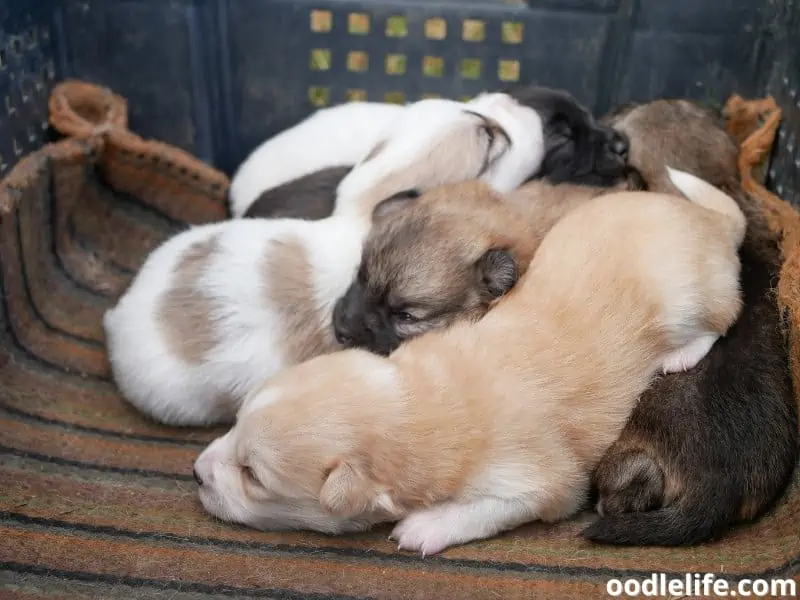
Fill the Box With Bedding
You’ve likely already planned on offering your dog and puppies bedding, but it’s worth mentioning it here, for bedding isn’t only for comfort. Instead, it’s also a tool to help keep the puppies warm.
Some people prefer using newspapers or paper towels as bedding for ease of cleaning. However, I recommend using towels or sheets, for they’ll help retain more body heat. Of course, you’ll need to regularly clean and change whatever bedding you decide to use.
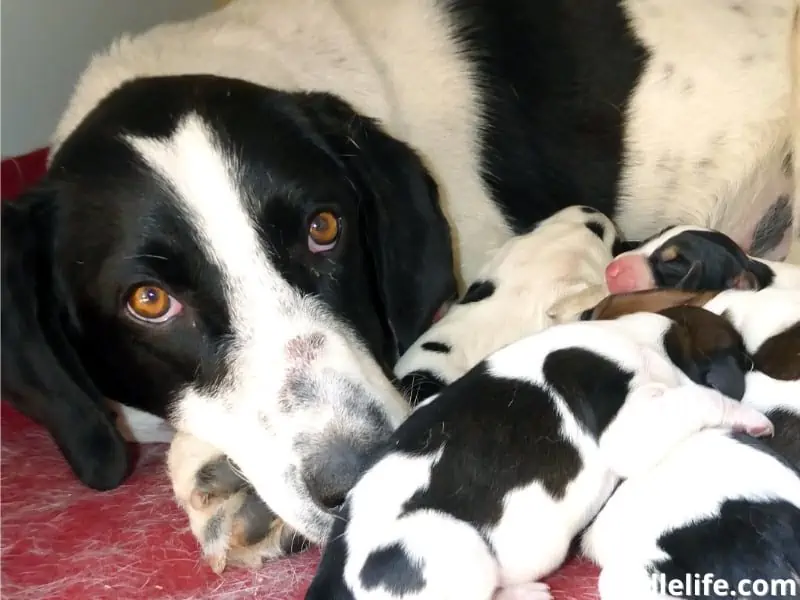
Create a Blockade
Puppies are typically eager to start exploring before they’re able to fully regulate their body temperature. So, if they have free reign of your house—or worse, the outdoors—they could stray too far from their mother and suffer from getting too hot or cold.
For this reason, keeping the puppies in a contained space is vital. Make sure the mom has plenty of room to wander around. Otherwise, the stress it could cause may create other issues for her and her pups.
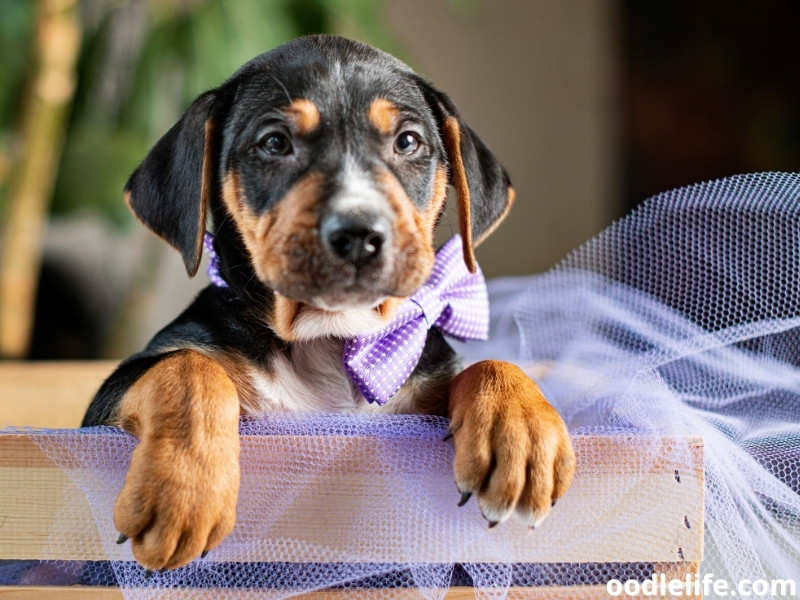
Buy a Thermometer
If you’re keeping puppies inside your home, you may not think you need a thermometer. However, it’s best practice to attach a thermometer to the inside of the box where the puppies live, as it’ll have its own microclimate.
Although getting too cold is often the biggest threat to puppies before they can regulate their body temperature, there’s always the risk that they could overheat too.

What to Do If Your Puppy Can’t Regulate Its Temperature?
If your puppy doesn’t appear to be regulating its body temperature by the time it reaches nine weeks old, you should take them to the vet.
Luckily, such situations are rare. Nevertheless, it could be a sign of an issue with your puppy’s body functions.
That said, even healthy adult dogs can have issues regulating their body temperature if they’re experiencing heat exhaustion or hypothermia.
Adult dogs should have ambient temperatures between 50° – 85°F. If your puppy reaches seven weeks of age and they don’t appear to be regulating their body temperature but you’re keeping them in temperatures above or below these numbers, external factors are likely at play.

FAQs About Puppy Temperature Regulation
If you still have questions about how puppies regulate body temperature, the answers below can help give you more guidance.
How can I help an orphaned puppy regulate its temperature?
You can help an orphaned puppy under seven weeks old regulate its body temperature by providing them with a heat source and lots of bedding, along with maintaining an ambient temperature of 75° – 85°F.
It’s also crucial to check their temperature with a rectal thermometer twice daily.

What are the signs of an overheated puppy?
When puppies get too hot, they may sleep away from their littermates and mothers. In this case, you should either turn up the air conditioning (in moderation) or move them to a cooler room.
Whatever you do, avoid pointing a fan or air conditioner at your puppies. Doing so could cause them to become too cold, giving you a new problem to tackle.

What are the signs of a cold puppy?
A cold puppy will shiver and seek warm places. If they don’t have access to other dogs to exchange body heat, you’ll likely find them burrowing under blankets, pillows, or cuddling up to heaters.
Ideally, you should rely on air temperatures to help your puppies maintain warmth. Otherwise, they could burn themselves on an unnatural heat source in an attempt to get warm.

What’s the best room temperature for puppies?
The best room temperature for puppies is between 75° – 85°F. Puppies require the warmer end of this range up until one week old.
After that time, they can remain comfortable at the lower end of that spectrum, provided they always have access to their mom for added warmth.

Final Thoughts: Are You Ready to Care for Your Puppies?
So, when can puppies regulate their body temperature?
Puppies can regulate their body temperature at around seven weeks old. However, by the time they reach four weeks old, they’ll have developed an adult temperature, allowing them to explore further away from their mother.
It’s crucial to keep your puppies’ living quarters at the appropriate temperature for their age to keep them as comfortable as possible. They should always have access to their mom, so they can cuddle up to her for added warmth.